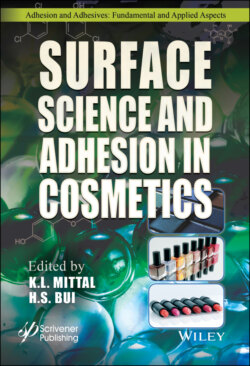Читать книгу Surface Science and Adhesion in Cosmetics - Группа авторов - Страница 21
1.3.2.2.2 Rub Test with Oil and Water
ОглавлениеThis test method is commonly used in order to determine a lipstick’s durability in regards to oils and water. Should a consumer eat greasy foods, the lipstick will become tacky or removed from the lips. In this case, the oil in the greasy food essentially acts as a make-up remover and breaks down the formulation. While resistance to grease is improved through the use of the MQ resin, products on the market today are not yet producing satisfactory outcomes when interacting with such oils. In vitro tests can be used to help predict the formulation resistance to such oils. Lipstick formulation is drawn down with 25 micrometer draw down bar on BIOSKIN, which is a urethane elastomer that is made to resemble human skin[60]. This substrate is commonly used to evaluate cosmetics due to its similarity, in terms of resiliency and feel, to human skin. The drawn down sample is left to dry at 37°C and 35%RH. In order to test oil resistance and waterproof qualities, a droplet with a controlled quantity of oil and water is then placed on the sample for ten minutes; after this point, the sample is manually wiped with a Kimwipe fifteen times, and a visual inspection is made in regards to the quality of the sample after wiping. The formulation passes the assay if there is no visual removal of the formulation after wiping with the Kimwipe. Figure 1.6 (left) shows what is considered to be a good and a bad sample after the test is completed. This method correlates to the challenges associated with eating and drinking in regards to lipstick durability. Long-wear lipstick formulations should have no removal after being wiped as no formulation should transfer.
